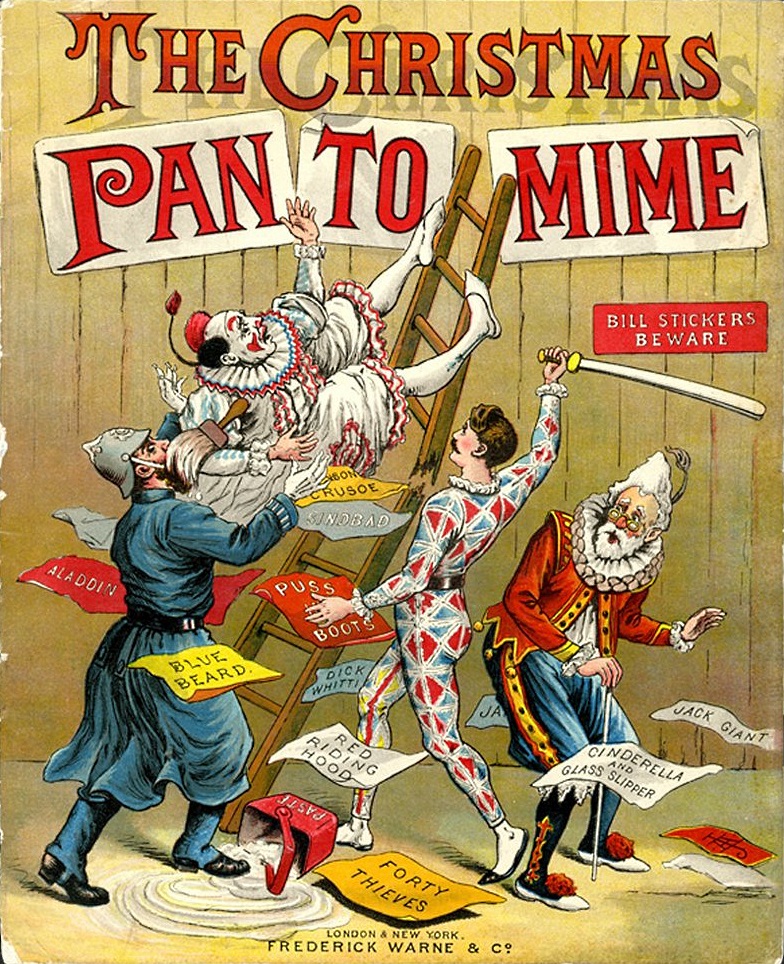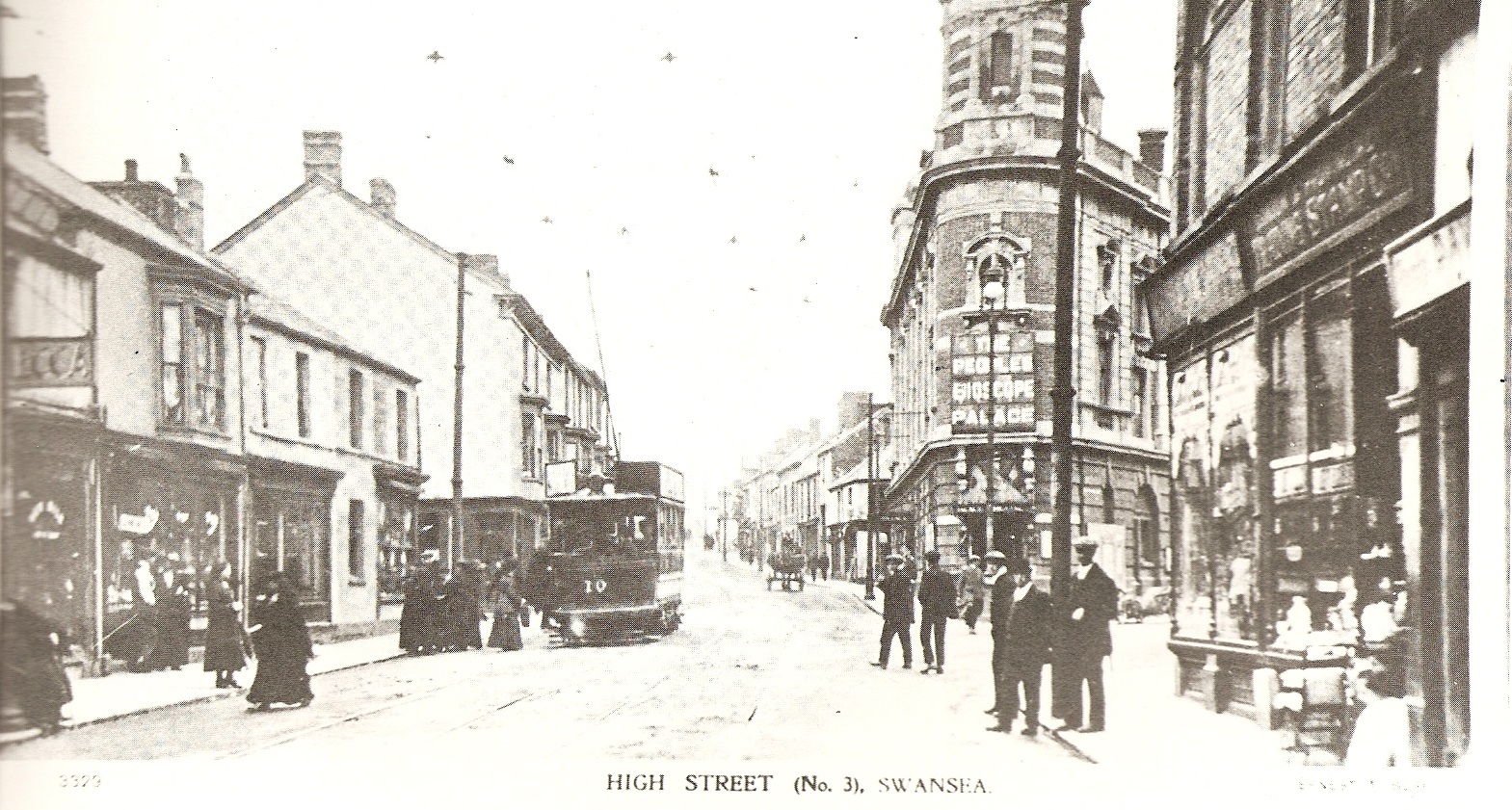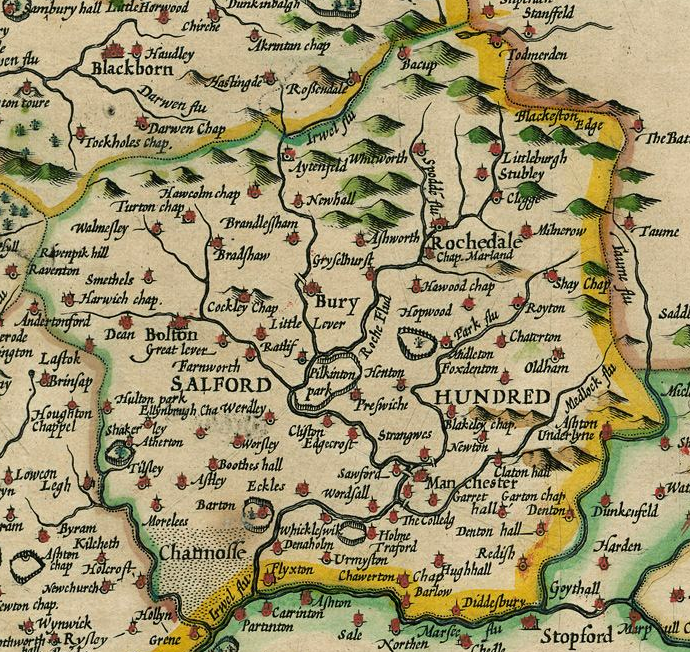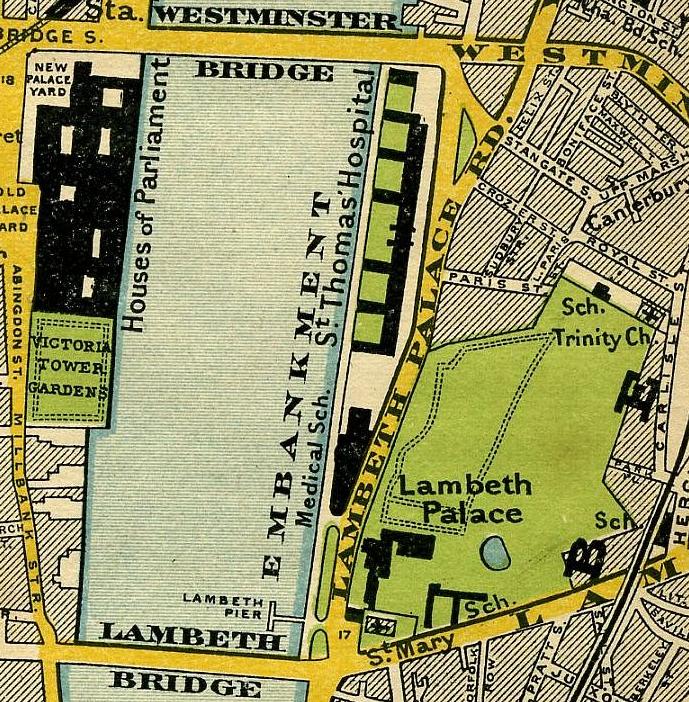|
Groves Family
The Groves family is a British theatre family which traces its roots to the Regency era. Its descendants include actors of the Nineteenth-century theatre, Victorian stage, the Music hall, British Music Hall, Broadway theatre and Film, motion pictures. Lineage The family can be traced back to Charles Groves (1807—1866) and Martha Bigg (1822—1915). Bigg began her acting career playing children’s roles in London’s West End in 1830, appearing in ''Peter Bell the Wagonner'' at the Royal Cobourg Theatre (today The Old Vic) and in the title role of Tom Thumb (play), ''Tom Thumb'' at the Theatre Royal, Haymarket. She married Groves in 1841 and together they toured the provinces, acting, producing and devising shows over the next two decades, simultaneously raising a family of ten children while travelling and working in theatres across Britain and Ireland. Victorian Generation Charles Groves (actor), Charles Groves (1843—1909) born in Limerick, Limerick, Ireland. He performed ... [...More Info...] [...Related Items...] OR: [Wikipedia] [Google] [Baidu] |
Mr Charles Groves In The Stage Play "The Elder Miss Blossom"
''Mister'', usually written in its contracted form ''Mr.'' (American English) or ''Mr'' (British English), is a commonly used English honorific for men without a higher honorific, or professional title, or any of various designations of office. The title ''Mr'' derived from earlier forms of ''master'', as the equivalent female titles ''Mrs'', ''Miss'', and '' Ms'' all derived from earlier forms of ''mistress''. ''Master'' is sometimes still used as an honorific for boys and young men. The plural form is ''Messrs''(.), derived from the French title ' in the 18th century. ' is the plural of ' (originally ', "my lord"), formed by declining both of its constituent parts separately. Historical etiquette Historically, ''mister'' was applied only to those above one's own status if they had no higher title such as ''Sir'' or ''my lord'' in the English class system. That understanding is now obsolete, as it was gradually expanded as a mark of respect to those of equal status and then ... [...More Info...] [...Related Items...] OR: [Wikipedia] [Google] [Baidu] |
Monmouthshire
Monmouthshire ( ; ) is a Principal areas of Wales, county in the South East Wales, south east of Wales. It borders Powys to the north; the English counties of Herefordshire and Gloucestershire to the north and east; the Severn Estuary to the south, and Torfaen, Newport, Wales, Newport and Blaenau Gwent to the west. The largest town is Abergavenny, and the administrative centre is Usk. The county is administered by Monmouthshire County Council. It sends two directly-elected members to the Senedd at Cardiff and one elected member to the Parliament of the United Kingdom, UK parliament at Westminster. The county name is identical to that of the Monmouthshire (historic), historic county, of which the current local authority covers the eastern three-fifths. Between 1974 and 1996, the county was known as Gwent (county), Gwent, recalling Kingdom of Gwent, the medieval kingdom which covered a similar area. The present county was formed under the Local Government (Wales) Act 1994, which ... [...More Info...] [...Related Items...] OR: [Wikipedia] [Google] [Baidu] |
Pantomime
Pantomime (; informally panto) is a type of musical comedy stage production designed for family entertainment, generally combining gender-crossing actors and topical humour with a story more or less based on a well-known fairy tale, fable or folk tale.Reid-Walsh, Jacqueline. "Pantomime", ''The Oxford Encyclopedia of Children's Literature'', Jack Zipes (ed.), Oxford University Press (2006), Pantomime is a participatory form of theatre developed in England in the 18th century, in which the audience is encouraged and expected to sing along with certain parts of the music and shout out phrases to the performers. The origins of pantomime reach back to ancient Greek classical theatre. It developed partly from the 16th century commedia dell'arte tradition of Italy and partly from other European and British stage traditions, such as 17th-century masques and music hall. An important part of the pantomime, until the late 19th century, was the harlequinade. Modern pantomime is perfor ... [...More Info...] [...Related Items...] OR: [Wikipedia] [Google] [Baidu] |
Victorian Burlesque
Victorian burlesque, sometimes known as travesty or extravaganza, is a genre of theatrical entertainment that was popular in Victorian England and in the New York theatre of the mid-19th century. It is a form of parody in which a well-known opera or piece of classical theatre or ballet is adapted into a broad comic play, usually a musical play, usually risqué in style, mocking the theatrical and musical conventions and styles of the original work, and often quoting or pastiching text or music from the original work. Victorian burlesque is one of several forms of burlesque. Like ballad opera, burlesques featured musical scores drawing on a wide range of music, from popular contemporary songs to operatic arias, although later burlesques, from the 1880s, sometimes featured original scores. Dance played an important part, and great attention was paid to the staging, costumes and other spectacular elements of stagecraft, as many of the pieces were staged as extravaganzas. Many o ... [...More Info...] [...Related Items...] OR: [Wikipedia] [Google] [Baidu] |
Swansea
Swansea ( ; ) is a coastal City status in the United Kingdom, city and the List of urban areas in the United Kingdom, second-largest city of Wales. It forms a Principal areas of Wales, principal area, officially known as the City and County of Swansea (). The city is the List of cities in the United Kingdom, twenty-eighth largest in the United Kingdom. Located along Swansea Bay in south-west Wales, with the principal area covering the Gower Peninsula, it is part of the Swansea Bay (region), Swansea Bay region and part of the Historic counties of Wales, historic county of Glamorgan and the ancient Welsh commote of Gŵyr. The principal area is the second most List of Welsh principal areas by population, populous local authority area in Wales, with an estimated population of in . Swansea, along with Neath and Port Talbot, forms the Swansea urban area, with a population of 300,352 in 2011. It is also part of the Swansea Bay City Region. During the 19th-century industrial heyday, ... [...More Info...] [...Related Items...] OR: [Wikipedia] [Google] [Baidu] |
Manchester
Manchester () is a city and the metropolitan borough of Greater Manchester, England. It had an estimated population of in . Greater Manchester is the third-most populous metropolitan area in the United Kingdom, with a population of 2.92 million, and the largest in Northern England. It borders the Cheshire Plain to the south, the Pennines to the north and east, and the neighbouring city of Salford to the west. The city borders the boroughs of Trafford, Metropolitan Borough of Stockport, Stockport, Tameside, Metropolitan Borough of Oldham, Oldham, Metropolitan Borough of Rochdale, Rochdale, Metropolitan Borough of Bury, Bury and City of Salford, Salford. The history of Manchester began with the civilian settlement associated with the Roman fort (''castra'') of Mamucium, ''Mamucium'' or ''Mancunium'', established on a sandstone bluff near the confluence of the rivers River Medlock, Medlock and River Irwell, Irwell. Throughout the Middle Ages, Manchester remained a ma ... [...More Info...] [...Related Items...] OR: [Wikipedia] [Google] [Baidu] |
Salford
Salford ( ) is a City status in the United Kingdom, city in Greater Manchester, England, on the western bank of the River Irwell which forms its boundary with Manchester city centre. Landmarks include the former Salford Town Hall, town hall, Salford Cathedral, Salford Lads' Club and St Philip's Church, Salford, St Philip's Church. In 2021 it had a population of 129,794. The demonym for people from Salford is ''Salfordian''. Salford is the main settlement of the wider City of Salford metropolitan borough, which incorporates Eccles, Greater Manchester, Eccles, Pendlebury, Swinton, Greater Manchester, Swinton and Walkden. Salford was named in the Early Middle Ages, though evidence exists of settlement since Neolithic times. It was the seat of the large Hundred of Salford in the Historic counties of England, historic county of Lancashire and was granted a market charter in about 1230, which gave it primary cultural and commercial importance in the region.. It was eventually overt ... [...More Info...] [...Related Items...] OR: [Wikipedia] [Google] [Baidu] |
Domestic Worker
A domestic worker is a person who works within a residence and performs a variety of household services for an individual, from providing cleaning and household maintenance, or cooking, laundry and ironing, or care for children and elderly dependents, and other household errands. The term "domestic service" applies to the equivalent occupational category. In traditional English contexts, such a person was said to be "in service". Some domestic workers live within their employer's household. In some cases, the contribution and skill of servants whose work encompassed complex management tasks in large households have been highly valued. However, for the most part, domestic work tends to be demanding and is commonly considered to be undervalued, despite often being necessary. Although legislation protecting domestic workers is in place in many countries, it is often not extensively enforced. In many jurisdictions, domestic work is poorly regulated and domestic workers are subje ... [...More Info...] [...Related Items...] OR: [Wikipedia] [Google] [Baidu] |
Lambeth, London
Lambeth () is a district in South London, England, which today also gives its name to the (much larger) London Borough of Lambeth. Lambeth itself was an ancient parish in the county of Surrey. It is situated 1 mile (1.6 km) south of Charing Cross, across the river from Westminster Palace. The population of the London Borough of Lambeth was 303,086 in 2011. The area experienced some slight growth in the medieval period as part of the manor of Lambeth Palace. By the Victorian era, the area had seen significant development as London expanded, with dense industrial, commercial and residential buildings located adjacent to one another. By this point, there were distinct localities (like Vauxhall) appearing on the map, and a separate parish of South Lambeth was created in 1861. The changes brought by World War II altered much of the fabric of Lambeth. Subsequent development in the late 20th and early 21st centuries has seen an increase in the number of high-rise buildings. The ... [...More Info...] [...Related Items...] OR: [Wikipedia] [Google] [Baidu] |
Highgate Cemetery
Highgate Cemetery is a place of burial in North London, England, designed by architect Stephen Geary. There are approximately 170,000 people buried in around 53,000 graves across the West and East sides. Highgate Cemetery is notable both for some of the people buried there as well as for its ''de facto'' status as a nature reserve. The Cemetery is designated Grade I on the Register of Historic Parks and Gardens. Location The cemetery is in Highgate N6, next to Waterlow Park, in the London Borough of Camden. It comprises two sides, on either side of Swain's Lane. The main gate is on Swain's Lane, just north of Oakshott Avenue. There is another, disused, gate on Chester Road. The nearest public transport (Transport for London) is the C11 bus, Brookfield Park stop, and Archway tube station. History and setting The cemetery in its original formthe northwestern wooded areaopened in 1839, as part of a plan to provide seven large, modern cemeteries, now known as the " Magnificent ... [...More Info...] [...Related Items...] OR: [Wikipedia] [Google] [Baidu] |
The Crystal Palace
The Crystal Palace was a cast iron and plate glass structure, originally built in Hyde Park, London, to house the Great Exhibition of 1851. The exhibition took place from 1 May to 15 October 1851, and more than 14,000 exhibitors from around the world gathered in its exhibition space to display examples of technology developed in the Industrial Revolution. Designed by Joseph Paxton, the Great Exhibition building was long, with an interior height of , and was three times the size of St Paul's Cathedral. The 293,000 panes of glass were manufactured by the Chance Brothers. The 990,000-square-foot building with its 128-foot-high ceiling was completed in thirty-nine weeks. The Crystal Palace boasted the greatest area of glass ever seen in a building. It astonished visitors with its clear walls and ceilings that did not require interior lights. It has been suggested that the name of the building resulted from a piece penned by the playwright Douglas Jerrold, who in July 1850 wro ... [...More Info...] [...Related Items...] OR: [Wikipedia] [Google] [Baidu] |
Sadler's Wells Theatre
Sadler's Wells Theatre is a London performing arts venue, located in Rosebery Avenue, Islington. The present-day theatre is the sixth on the site. Sadler's Wells grew out of a late 17th-century pleasure garden and was opened as a theatre building in the 1680s. Lacking the requisite licence to perform straight drama, the house became known for dancing, performing animals, pantomime, and spectacular entertainments such as sea battles in a huge water tank on the stage. In the mid-19th century, when the law was changed to remove restrictions on staging drama, Sadler's Wells became celebrated for the seasons of plays by Shakespeare and others presented by Samuel Phelps between 1844 and 1862. From then until the early 20th century the theatre had mixed fortunes, eventually becoming abandoned and derelict. The philanthropist and theatre owner Lilian Baylis bought and rebuilt the theatre in 1926. Together with Baylis's Old Vic, Sadler's Wells became home to dance, drama and opera ... [...More Info...] [...Related Items...] OR: [Wikipedia] [Google] [Baidu] |










